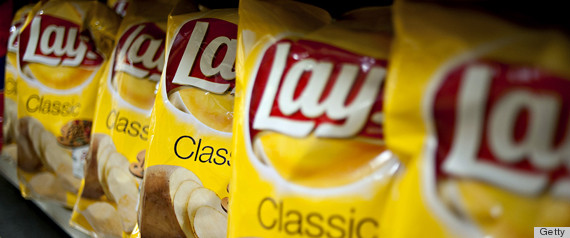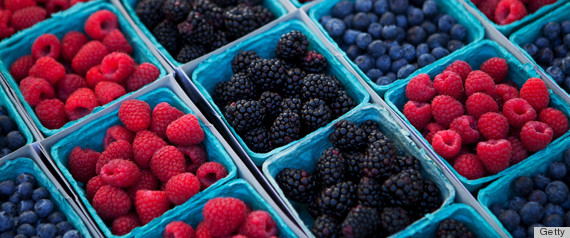
We all know sugar is bad for your waistline, but what about your skin? With all of the negative press sugar has been getting for its effects on heart health and obesity rates, we thought it was time to decipher its beauty ramifications -- and the results aren't pretty. We spoke to Dr. Nicholas Perricone, a dermatologist and nutritionist with an eponymous skincare line, and Dr. Maryann Mikhail, a New York-based dermatologist, to get the lowdown on what exactly sugar does to your skin and what you can do about it.
Why Sugar Is Bad For Your Skin
Let's start with the basics. When you ingest sugar or high-glycemic foods that rapidly convert to sugar -- whether it's in the form of an apple or a piece of cake -- your body breaks down these carbohydrates into glucose, which raises your insulin levels. Simple carbohydrates, like refined sugar, white bread and soda, cause your insulin levels to spike, which leads to what Dr. Perricone describes as "a burst of inflammation throughout the body."
Inflammation produces enzymes that break down collagen and elastin, resulting in sagging skin and wrinkles. Digested sugar permanently attaches to the collagen in your skin through a process known as glycation. Aside from increasing the effects of aging, glycation can also exacerbate skin conditions like acne and rosacea. Plus, the more sugar you eat, the more likely it is you'll develop insulin resistance, which can manifest as excess hair growth (hirsutism) and dark patches on the neck and in body creases.
Understanding the glycemic index, the scale which determines how quickly blood sugar levels rise after ingesting particular foods (hence, the high- and low-glycemic labels), is key to making the right choices for your skin when it comes to sugar.
What Sugar You Shouldn't Eat
Simple carbohydrates are your skin's enemy, since they rapidly break down into glucose and result in insulin spikes. Avoid foods that are proinflammatory, high-glycemic or high in saturated fats like: white bread, candy, fried food, ice cream, fruit juice, pasta, ketchup, cream cheese, jam, pizza, sugar (white and brown), packaged snacks and sodas.

What Sugar You Should Eat
Opt for complex carbohydrates, like brown rice and vegetables, which are broken down into glucose at a slower rate (and therefore don't cause that pesky insulin spike). Low-glycemic options, like beans, nuts and whole grains, as well as fibrous foods, which delay sugar absorption, also help control blood sugar levels. Do your best to follow an anti-inflammatory diet of healthy fats (like olive oil and avocados), lean protein (like salmon), fiber (like broccoli and cauliflower) and antioxidants (like berries) if you want glowing, youthful skin.

Other Tricks To Counteract Sugar's Effects On Skin
•Get plenty of sleep. When you don't get enough shut-eye, your body releases the stress hormone, cortisol, which mobilizes sugar stores and causes your insulin to spike.
•Speaking of stress, try to keep yours at a minimum. Stress can spike insulin levels just like eating sugar can. The effects of stress are particularly correlated with acne breakouts.
•Eat frequent, balanced meals. Don't think lowering your sugar intake means lowering your food intake per se. If your goal is to keep your blood sugar levels consistent, make sure to fuel up with low-glycemic, high protein food every three hours to avoid insulin spikes.
•Be mindful about how you prepare your food. When cooking starches, like potatoes and foods with wheat, keep in mind that the heat involved in cooking causes a process known as gelatinization, which can lead to upping the glycemic index of a food item. The takeaway? Avoid starches fried in high heat or that are commercially processed.
•Order counts. Eat your proteins first when sitting down for a meal, since they don't stimulate insulin spikes and therefore keep your body from triggering the inflammatory effects caused when you ingest insulin-spiking foods.
•Fats are your friend. Healthy fats, like Omega-3s, keep your skin looking soft, supple and radiant (read: youthful).
More advice for your beauty routine: